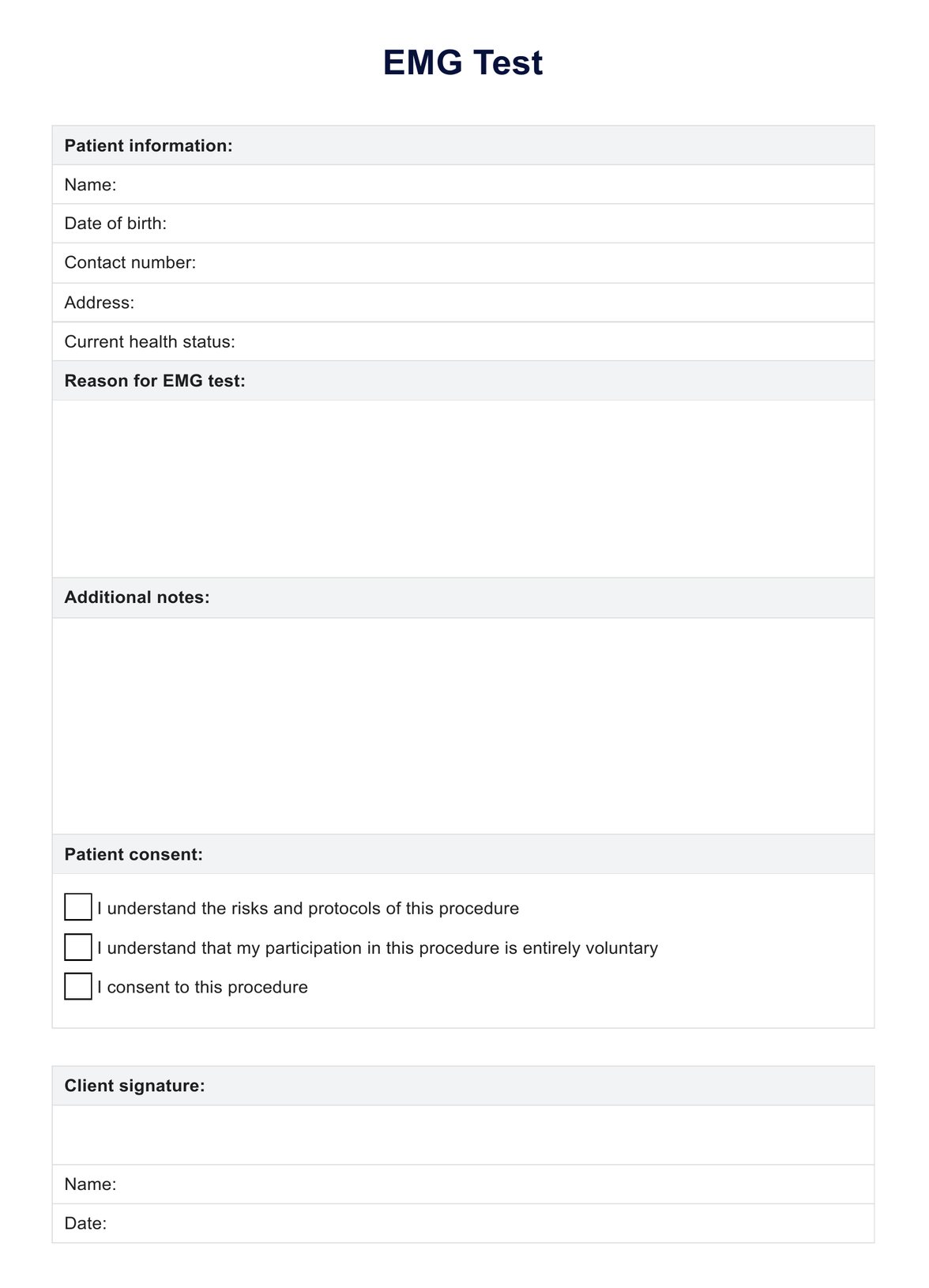Your healthcare provider usually provides the results from an EMG test within 24 to 48 hours of the test.

Electromyography (EMG)
If you or a client are experiencing muscle pain or numbness, it may be beneficial to complete an EMG test. Read this guide to learn more and receive a free template!
Electromyography (EMG) Template
Commonly asked questions
Some patients may experience slight pain or discomfort when the needle electrode is inserted, which may differ depending on the investigated area. However, this usually tends to be on the smaller end of the pain scale.
If patients and practitioners follow protocols and preparations for the EMG test appropriately, no severe risks are involved. However, some clients may experience light bleeding following the test, particularly when taking blood thinners.
EHR and practice management software
Get started for free
*No credit card required
Free
$0/usd
Unlimited clients
Telehealth
1GB of storage
Client portal text
Automated billing and online payments











